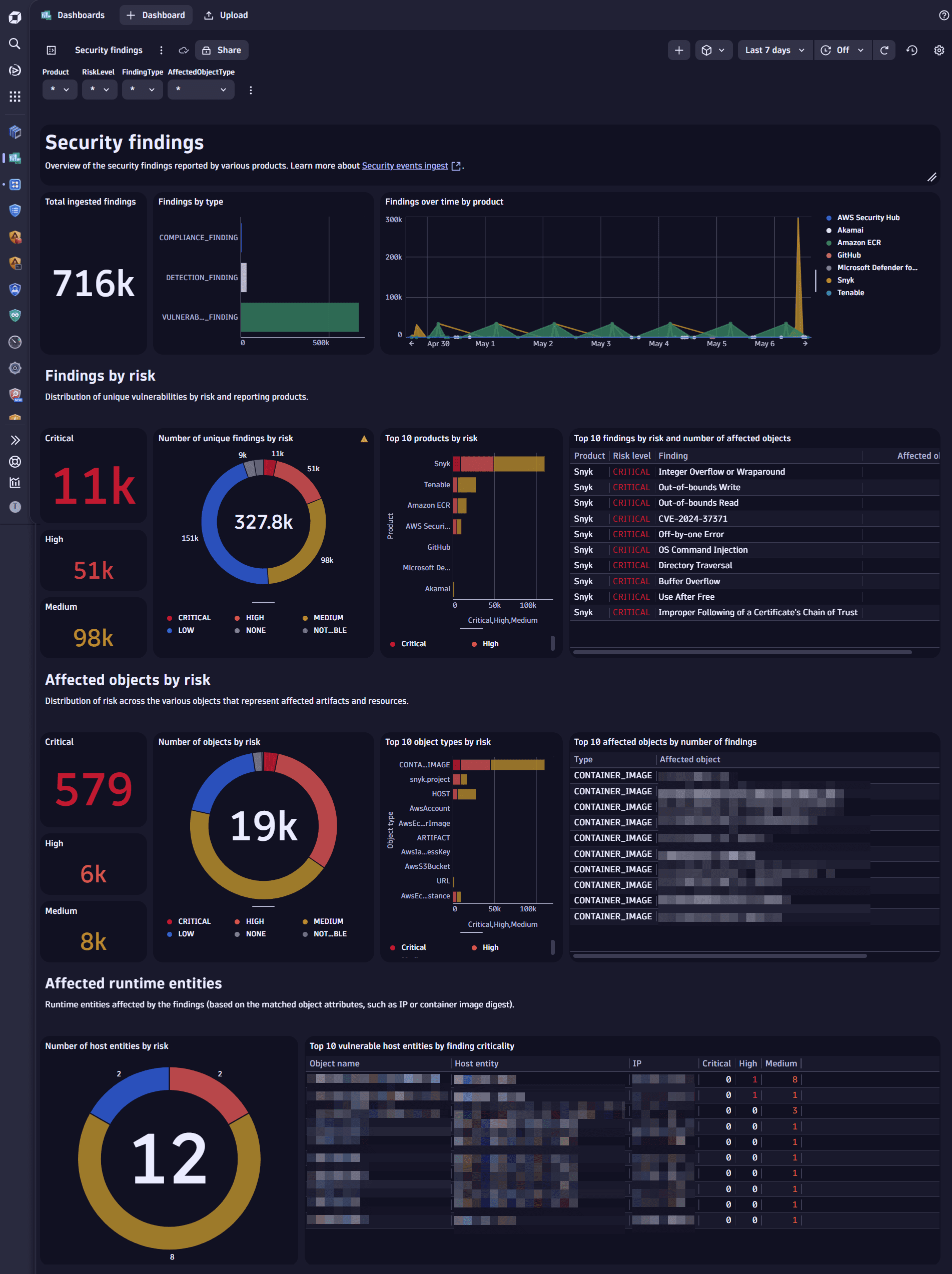Visualize and analyze security findings
- Latest Dynatrace
- Tutorial
Organizations use multiple security products and tools that generate security findings in various data formats. Accessing the data in a siloed approach makes the life of security analysts hard, as they must spend a lot of manual effort generating a combined security posture picture.
In this context, you can
-
Ingest security findings from your security tools (see Security integrations) or vulnerability finding events from Dynatrace-monitored processes (see Third-party library events) and map them to the Dynatrace Semantic Dictionary, which makes events from different tools uniformly accessible with DQL.
-
View and analyze security findings across products and tools with our dashboards, which can also be a good foundation for tailoring further visual customization to meet your organization's posture analysis and reporting requirements.
-
Query ingested data in our dedicated apps.
Target audience
Security analysts and managers responsible for analyzing and reporting the organization's security posture.
Key use cases include:
- Gaining a unified view of all the security findings
- Prioritizing security findings across products
- Identifying top affected assets
Prerequisites
Depending on the ingestion source, follow the appropriate setup:
-
Third-party security products: Set up a supported integration.
-
Dynatrace-monitored environments: Enable third-party vulnerability detection to ingest vulnerability finding events from third-party libraries.
Get started
1. Visualize
-
Open
 Dashboards and go to Ready-made.
Dashboards and go to Ready-made.Ready-made dashboards are available for third-party tool integrations. Vulnerability finding events from Dynatrace-monitored environments are accessible via DQL but aren't currently included in those dashboards.
-
Search for and select Security findings for the desired integration.
Example result:

2. Analyze
Open  Notebooks or Security Investigator
Notebooks or Security Investigator  to query ingested data, using the data format in Semantic Dictionary.
to query ingested data, using the data format in Semantic Dictionary.
For a better understanding of how to build your queries, see DQL query examples for ingested events.